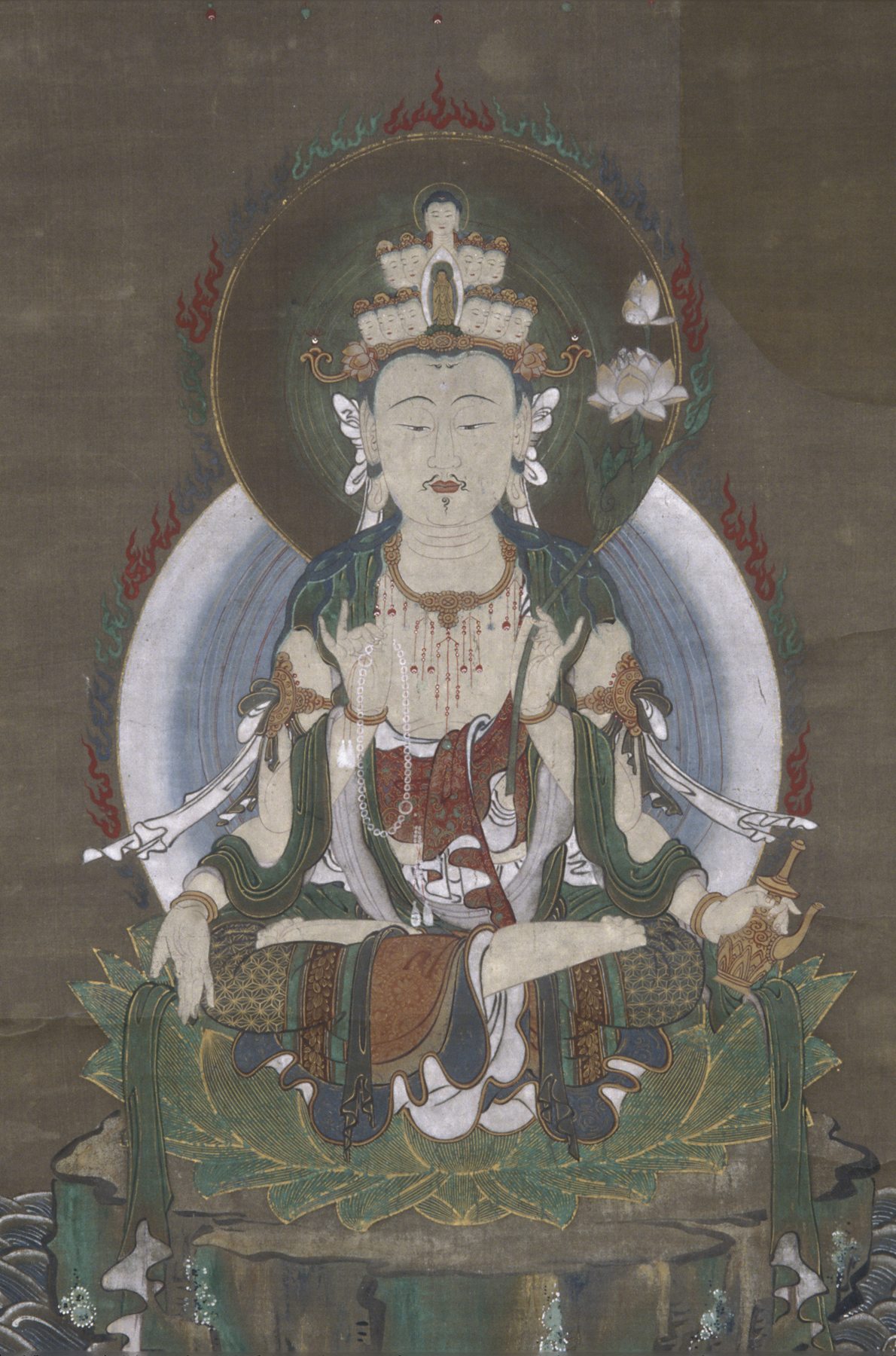Juichimen Kannon (Eleven-headed Avalokitesvara), unknown maker from Japan
Artwork Overview
Juichimen Kannon (Eleven-headed Avalokitesvara)
, 1600s with alterations made in the 1800s
Where object was made: Japan
Material/technique: color; ink; kirikane; silk
Dimensions:
Image Dimensions Height/Width (Height x Width): 110.8 x 50.5 cm
Image Dimensions Height/Width (Height x Width): 43 5/8 x 19 7/8 in
Mount Dimensions (Height x Width x Depth): 194.3 x 69.9 cm
Mount Dimensions (Height x Width x Depth): 76 1/2 x 27 1/2 in
Roller Dimensions (Width x Diameter): 29 x 1 in
Image Dimensions Height/Width (Height x Width): 110.8 x 50.5 cm
Image Dimensions Height/Width (Height x Width): 43 5/8 x 19 7/8 in
Mount Dimensions (Height x Width x Depth): 194.3 x 69.9 cm
Mount Dimensions (Height x Width x Depth): 76 1/2 x 27 1/2 in
Roller Dimensions (Width x Diameter): 29 x 1 in
Credit line: Gift of Dr. and Mrs. George A. Colom
Accession number: 1986.0092
Not on display
If you wish to reproduce this image, please submit an image request







